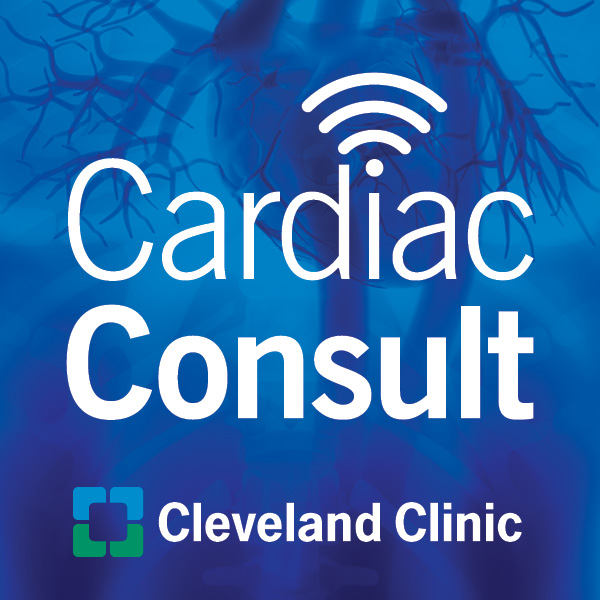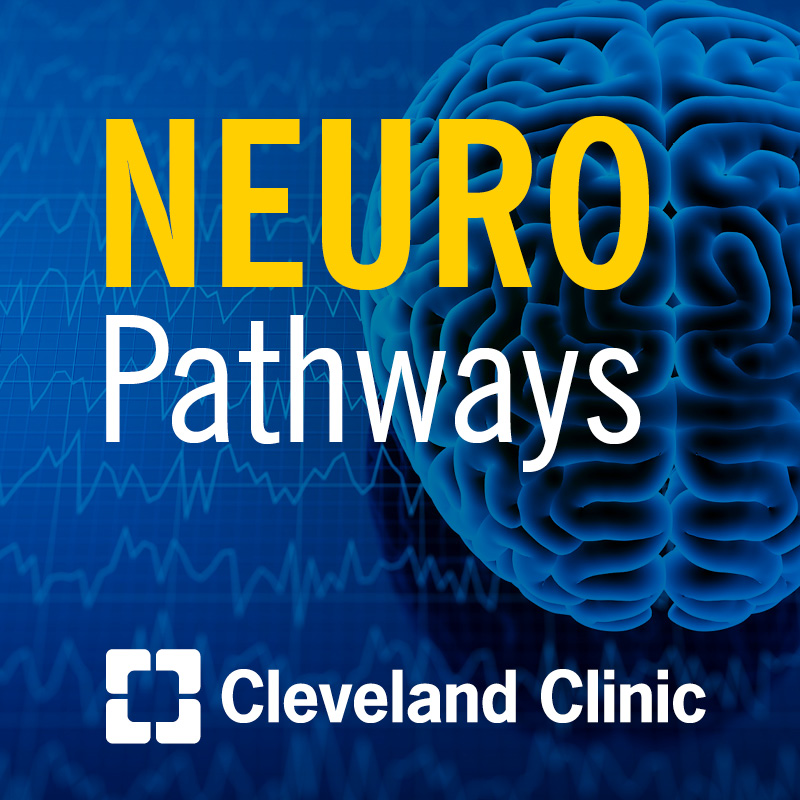Talking Tall Rounds®: Advanced AFib Center

Moderators Edward Soltesz, MD andOussama Wazni, MD highlight the Advanced AFib Center: Contemporary Hybrid Procedures Tall Rounds® session.
- Case Presentation - Advanced Fellow: Eoin Donnellan, MD
- 2020 CONVERGE Clinical Trial Overview: Tyler Taigen, MD
- Determining Candidates for the Hybrid Convergent Procedure: Ayman Hussein, MD
- Cardiac Surgery Approaches to Surgical Treatment with Catheter Ablation: Hybrid Convergent Procedure: Edward Soltesz, MD
- Electrophysiology Approaches to Surgical Treatment with Catheter Ablation: Hybrid Convergent Procedure: Walid Saliba, MD
- External Perspective: Best Practices and Guide to Hybrid Convergent Procedures: Andre Gauri, MD, Spectrum Health
Subscribe: Apple Podcasts | Podcast Addict | Buzzsprout | Spotify
Talking Tall Rounds®: Advanced AFib Center
Podcast Transcript
Announcer:
Welcome to the Talking Tall Rounds series, brought to you by the Sydell and Arnold Miller Family Heart, Vascular & Thoracic Institute at Cleveland Clinic.
Edward Soltesz, MD:
Good morning. I'm Dr. Edward Soltesz, and on behalf of my colleague Dr. Oussama Wazni, welcome to Tall Rounds. Today, we'll be discussing contemporary hybrid approaches for the treatment of complex atrial fibrillation. You'll be hearing from experts in our advanced Atrial Fibrillation Center here at the Cleveland Clinic, as well as Dr. Andre Gauri, who is an electrophysiologist at Spectrum Health in Grand Rapids, Michigan. Let's start off with a case presentation by Dr. Donnellan.
Eoin Donnellan, MD:
Good morning. Our patient is a 73-year-old male with a past medical history of coronary artery disease. Underwent PCI to the LAD in 2009. His history is also notable for a severely dilated left atrium, with a left atrial volume index of 63 mm/m2. He also has longstanding, persistent AFib. He failed prior antiarrhythmic therapy with flecainide and amiodarone. Numerous cardioversions performed over a year ago resulted in early recurrence of AFib within days.
Eoin Donnellan, MD:
This is his ECG on presentation to us, demonstrating atrial fibrillation. A transthoracic echo was performed, which showed a very dilated left atrium. In light of his history of longstanding persistent AFib, as well as his severely dilated left atrium, we felt that his chances of success would be optimized utilizing a hybrid convergent procedure.
Eoin Donnellan, MD:
Epicardial ablation was performed utilizing a subxiphoid approach using a vacuum-assisted unipolar radiofrequency device, the Epi-Sense. He was subsequently brought to the EP lab several months later, where endocardial mapping and ablation was performed.
Eoin Donnellan, MD:
Following surgical epicardial ablation, this is a voltage map obtained using a Pentaray mapping catheter in our EP lab. This voltage map was performed endocardially. Here, we're looking at the heart from the back. This is a posteroanterior view. We see the left-sided pulmonary veins and right-sided pulmonary veins, upper and lower.
Eoin Donnellan, MD:
The red here indicates low voltage, whereas purple denotes healthy atrial tissue. We see along the posterior wall we've areas of low voltage. Posterior to the pulmonary venous ostia, we also have low-voltage areas, particularly posterior to the left inferior pulmonary vein. However, we can see that the veins at this point are not isolated. Again, this is following epicardial but prior to endocardial ablation.
Eoin Donnellan, MD:
On presentation to the EP lab, the patient was in a left-sided atrial flutter. Here, we're looking at the left atrium from the front. On the left, we see an activation map of the atrial flutter. On the right, we see a voltage map, again looking at the front surface of the left atrium. I'll draw your attention to the right-sided map here, where we see an island of scar. On the left, we see the activation of the atrial flutter where it propagates around this island of scar, up the ridge anterior to the left-sided veins.
Eoin Donnellan, MD:
We proceeded with wide antral circumferential ablation around the left- and right-sided pulmonary veins. We also performed linear ablation along the upper and lower aspects of the posterior wall. While we were ablating in this region, anterior to the left inferior pulmonary vein, the atrial flutter terminated. White here indicates a line of block, and red denotes early activation meeting late activation.
Eoin Donnellan, MD:
Following both endocardial and epicardial ablation, we repeated a voltage map. We now see that the posterior wall and the pulmonary veins are all red, indicating an absence of voltage. So this is a very good outcome.
Eoin Donnellan, MD:
This is an ECG obtained at 12 months following the hybrid procedure. We see that the patient is in sinus arrhythmia with a prolonged P-R interval and some PACs. He feels symptomatically much improved and did extremely well following his procedure. Thank you.
Edward Soltesz, MD:
So let's talk about the surgical approach as part of the hybrid convergent ablation. These are my disclosures. So we've certainly evolved ablation strategies over the last 25 years. We started obviously back in 1987 with the first cut-and-sew Maze by Dr. Cox, and that evolved into the 1990s with catheter-based ablations, understanding that the pulmonary veins are a major source of the paroxysmal atrial fibrillation predominantly.
Edward Soltesz, MD:
In the early 2000s, we developed alternative energy sources, particularly radiofrequency and cryoablation, that allowed us to do the traditional cut-and-sew Maze much less invasively and opened the door to more minimally invasive approaches, including, for instance, a totally thoracoscopic Maze procedure, the Wolf Mini-Maze procedure and a robotic Maze procedure.
Edward Soltesz, MD:
But over the past decade, we've also developed the hybrid convergent procedure, and that really is the best of both worlds. It combines surgical and EP AF expertise to provide a viable treatment option to patients with complex atrial fibrillation.
Edward Soltesz, MD:
Now, here on the left, you see the original cut-and-sew Cox-Maze III, a very effective operation for atrial fibrillation, but of course, it requires full cardiopulmonary bypass through a median sternotomy and cutting and sewing the heart back together. The modified Cox-Maze IV procedure is what we do now for an open approach, and it uses a combination of radiofrequency and cryothermy as our energy sources to get that standard lesion set. You've heard about the catheter-based variations on the Maze ablation set, but I think what's important to realize is, specifically for longstanding persistent atrial fibrillation where the posterior left atrial wall substrate becomes extremely important, is we have gaps in that area. And that's where we're able to hopefully provide an opportunity for such patients by combining both surgical and electrophysiologic approaches.
Edward Soltesz, MD:
So the hybrid convergent plus procedure is a combination of surgery and catheter-based approaches. It's non-cardiopulmonary bypass, sternal sparing and it's esophageal protective. The plus indicates our additional management of the left atrial appendage, as well as ligament of Marshall, through a left thoracoscopic approach. This whole procedure, the hybrid procedure, can be performed either staged or in a single one-stop-shop. And, as you have seen some beautiful mapping pictures, mapping provides quality control that is not otherwise available to us in a surgical platform. Here's what the lesion set looks like, and you see the extensive ablation of the posterior wall that's provided by the surgical component of the hybrid convergent lesion set. And this is possible because the posterior left atrium really contributes minimally to true left atrial transit function. So multiple studies really have confirmed that we're able to get away with this approach with really minimal downside to the patient.
Edward Soltesz, MD:
So really it's the best of all worlds. The hybrid convergent with the left atrial appendage clip does not utilize cardiopulmonary bypass. It's sternal sparing and minimally invasive and is able to target both the triggers as well as the substrate in these patients with complex longstanding persistent atrial fibrillation.
Edward Soltesz, MD:
There are, of course, some patients who are not candidates for this approach, particularly those who have a documented left atrial appendage thrombus or who have significant comorbid valvular or coronary heart disease. These patients obviously should be treated with an open surgical approach and a concomitant Cox-Maze IV lesion set. Certain patients with severe pulmonary hypertension, severe chronic lung disease, and some patients who have had previous cardiac surgery due to the adhesions in the posterior left atrial wall may also not be candidates. And in that situation, again, we pivot to an open approach.
Edward Soltesz, MD:
So we start by discontinuing anticoagulation 72 hours preoperatively. We use double-lumen endotracheal tube for lung isolation. A transesophageal echo is placed at the beginning of the procedure to confirm that there's no left atrial appendage thrombus present. We insert an esophageal temperature probe, although we've rarely ever seen increases in esophageal temperature during the case, and we start with a 4-cm subxiphoid incision, as you can see there. We place our pericardioscopic cannula, which is a very flexible cannula that has irrigation and suction attached to it, and this allows us direct visualization with the use of a 5-mm scope to the posterior left atrial wall. We then insert our Epi-Sense ablation probe, which allows us to integrate vacuum, perfusion, irrigation, and of course, energy to really develop robust lesions.
Edward Soltesz, MD:
The posterior left atrial wall ablation looks something like this from the surgeon's perspective. We do two to three rows of these linear ablations with overlap, totaling anywhere from 18 to 28 burns. We then switch and move to the left chest. We use typically two 5-mm ports and one 10-mm thoracoscopic port, and under direct vision, open the pericardium, identify the ligament of Marshall, ablate it and divide it, and then place our left atrial appendage clip.
Edward Soltesz, MD:
We also have the opportunity to add additional ablation. Particularly, we can do full left PVI from that side with a bipolar clamp from AtriCure, as well as we can add left atrial dome ablation across from the left side.
Edward Soltesz, MD:
This is what it looks like in the operating room with three ports. You can see us opening the pericardium there, and then we identify the ligament of Marshall. It's a beautiful structure to see under direct vision. We ablate it, divide it, and then place our clip, as you can see. The clip that we utilize is one of two. There's either the complete clip or the PRO-V clip, which is an open-ended clip. The topography of the left atrial appendage really dictates which clip we use for each individual patient. We confirm complete closure of the left atrial appendage with transesophageal echo, and here you can see this case, at a three-month CT scan follow-up, very nice occlusion and smooth left atrial wall present there.
Edward Soltesz, MD:
The logistics of this hybrid approach, because it obviously combines both surgical and electrophysiologic approaches, can be done with either a same-day one setting, a same-day two setting, or a sequential day setup. We prefer a staged approach really because it allows us to resolve the acute edema before the endocardial procedure is started. And it also allows the epicardial lesions to mature. This also is opportune for patients who've had multiple prior catheter-based ablations with very good control of their pulmonary veins. And many of these patients may not even need the staged procedure, so it allows us to potentially avoid that. Thank you very much for your attention.
Announcer:
Thank you for listening. We hope you enjoyed the podcast. Like what you heard? Visit Tall Rounds online at clevelandclinic.org/tallrounds and subscribe for free access to more education on the go.

Cardiac Consult
A Cleveland Clinic podcast exploring heart, vascular and thoracic topics of interest to healthcare providers: medical and surgical treatments, diagnostic testing, medical conditions, and research, technology and practice issues.



